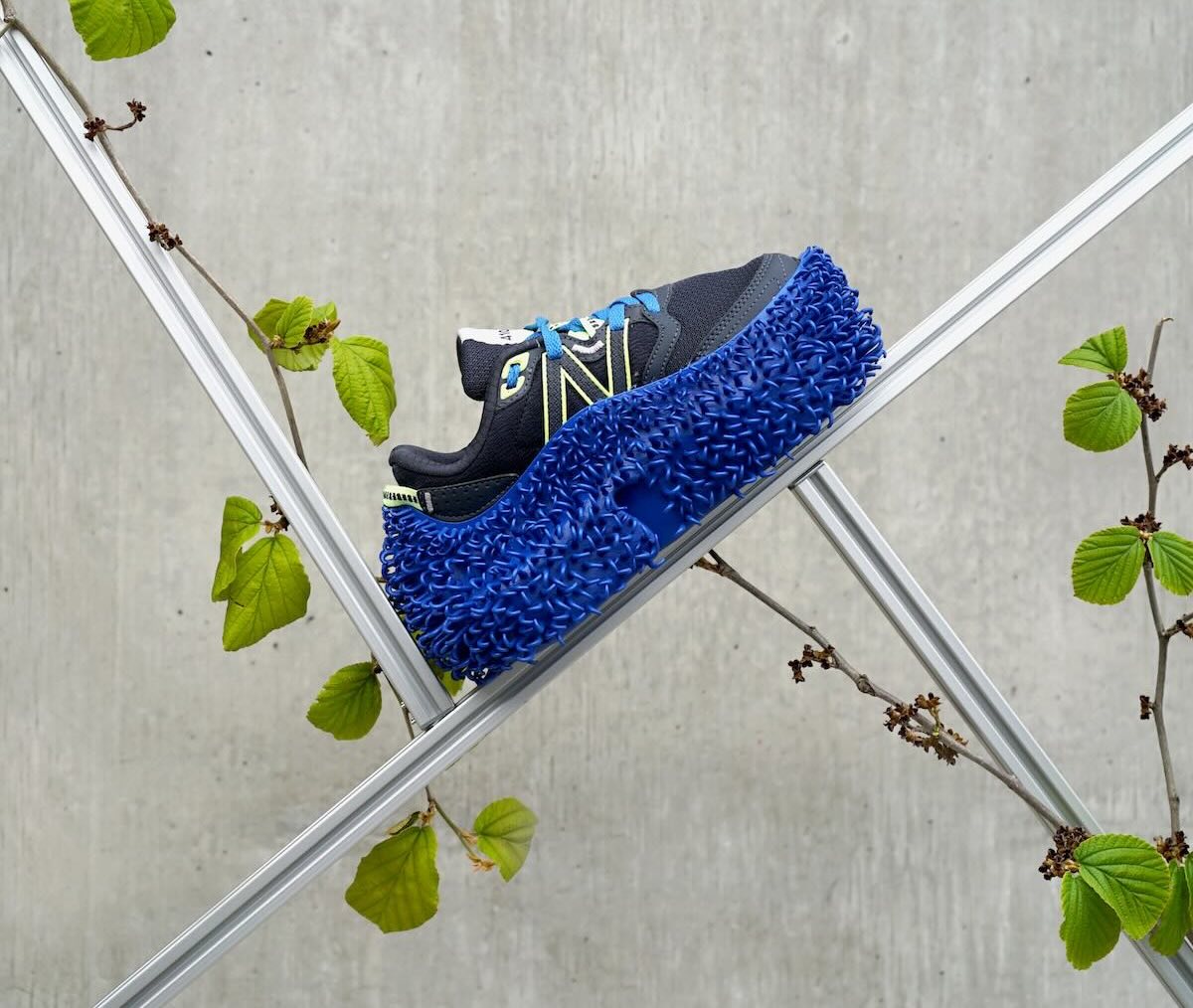
Urban Rewilding, Biomimicry And Futuristic Fashion | Interview With Kiki Grammatopoulos
UK-based designer Kiki Grammatopoulos seeks to democratize urban re-wilding efforts through her “Rewild the Run” trainers. In this interview, the young designer reveals the inspirations behind her unique creation and its intentions…
Initially presented as Kiki’s final thesis project at the Central Saint Martins, the Rewild The Run trainers were also showcased at the 2023 Milan Design Week, where they garnered considerable attention. It’s easy to see why.
Sporting thick electric blue soles with a mesh of curling spikes meant to mimic the hooves and fur of animals, Kiki’s creation is both futuristic and timely. In recent years, design has been entering an era of prioritizing eco-consciousness, with designers frequently incorporating biomimicry or utilizing ethical, ‘green’ products. Architectural design has also witnessed a shift, with architects and city planners increasingly emphasizing green spaces that restore lost biodiversity, and aim to nurture mankind’s strained relationship with nature due to rapid urbanization—a phenomenon known as urban rewilding.
The Rewild The Run trainers converge these two trends, with a design based on biomimicry and an intent to foster the human-nature connection. These trainers offer a glimpse into what the clothing of the future could look like.
Urban rewilding plays a significant role in the design of these sneakers, as Kiki aims to democratize rewilding efforts. Much like city planners advocating for more rooftop gardens, green corridors, and parks to promote biodiversity, ecosystem function, and the persistence of native species, the Rewild the Run trainers allow people to contribute to rewilding efforts by sowing seeds as they run. The soles of the trainers mimic the mechanism of epizoochory, which is essential to the dispersal of seeds by animals.
We recently had the pleasure of interviewing Kiki on her design journey, Rewild the Run trainers and her take on urban rewilding.
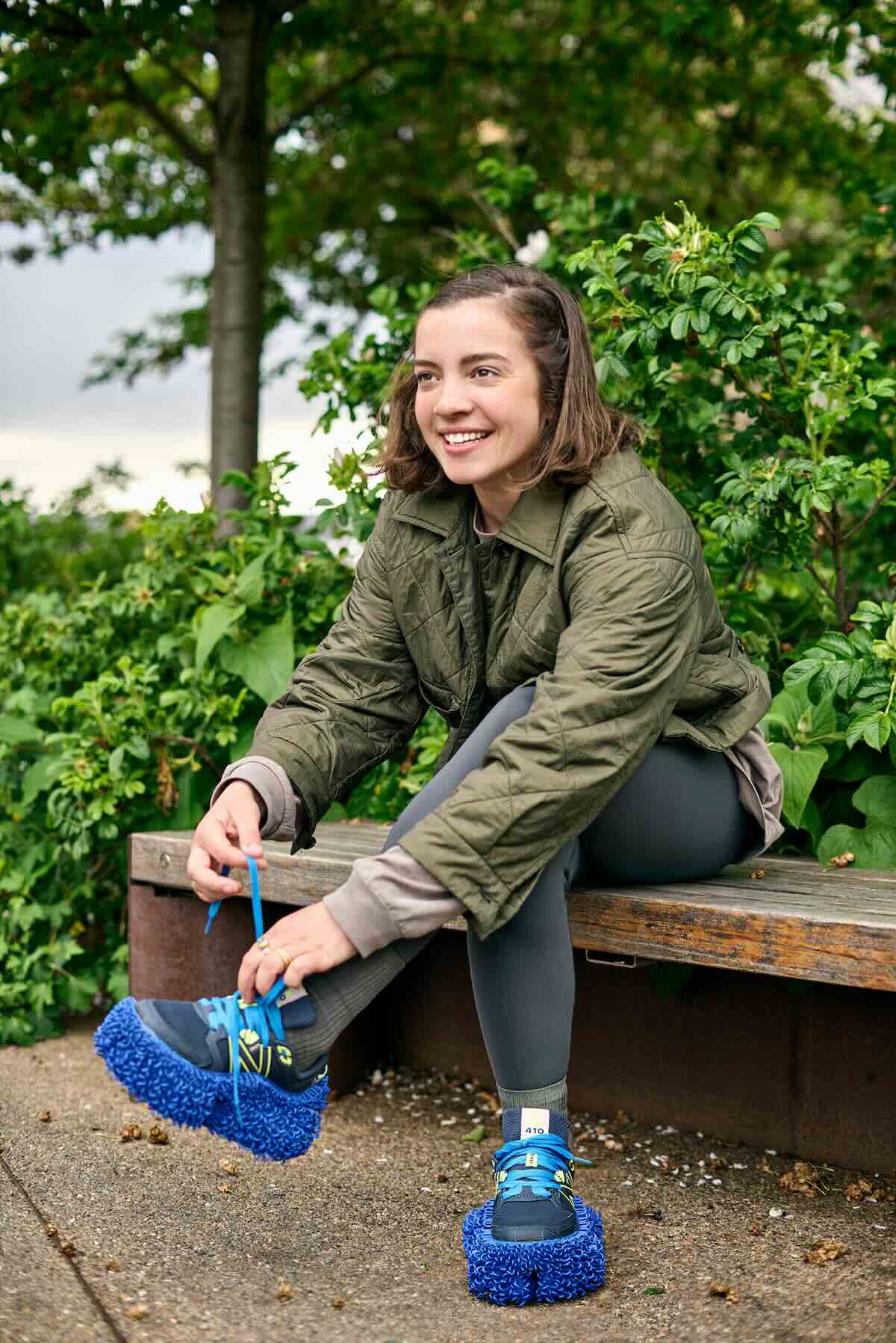
An intent of your Rewind the Run trainers has been to connect humans to the natural world. What is your personal connection to nature?
My personal connection to nature was deeply rooted in my upbringing and background of Greek heritage, a country that has a strong tradition of living in harmony with its nature and agriculture, eating seasonally, and respecting the natural cycles of the earth.
However, it was during the COVID-19 pandemic that I truly re-appreciated the importance of our connection to the natural world. The lockdowns and social distancing measures brought a stark reminder of how essential nature is to our well-being.
Can you tell us a little bit about your design journey? Did you always know you would work on eco-conscious designs?
My design journey has evolved significantly over the years. I grew up wanting to become an automotive designer, however, studying Industrial Design at Central Saint Martins shifted my focus towards product design in fashion accessories. Post-university, and despite working for 4 years in industry (within some sustainability projects), the waste and impact caused by us as designers and by the industry as a whole became evident, prompting me to return to Central Saint Martins to pursue an MA in Material Futures.
This course allowed me to further explore and re-learn to design in a more eco-conscious way. While I didn’t always know this would be my path, witnessing the need for sustainable practices led me here.
How significant is biomimicry in your designs? Is this a field you would want to explore in future designs?
While working on ‘Rewild the Run’, I concentrated on designing a mechanism for the trainers to ‘pick up and disperse seeds’ (epizoochery). I began by attaching Velcro strips to my existing shoes to observe what kinds of foliage I collected during my walks and runs. This experiment reminded me that Velcro is an example of biomimicry, which sparked my interest in exploring how biomimicry can be utilized as a design tool, particularly for environmentally focused projects, although it has become an incredibly useful tool to use for all design too.
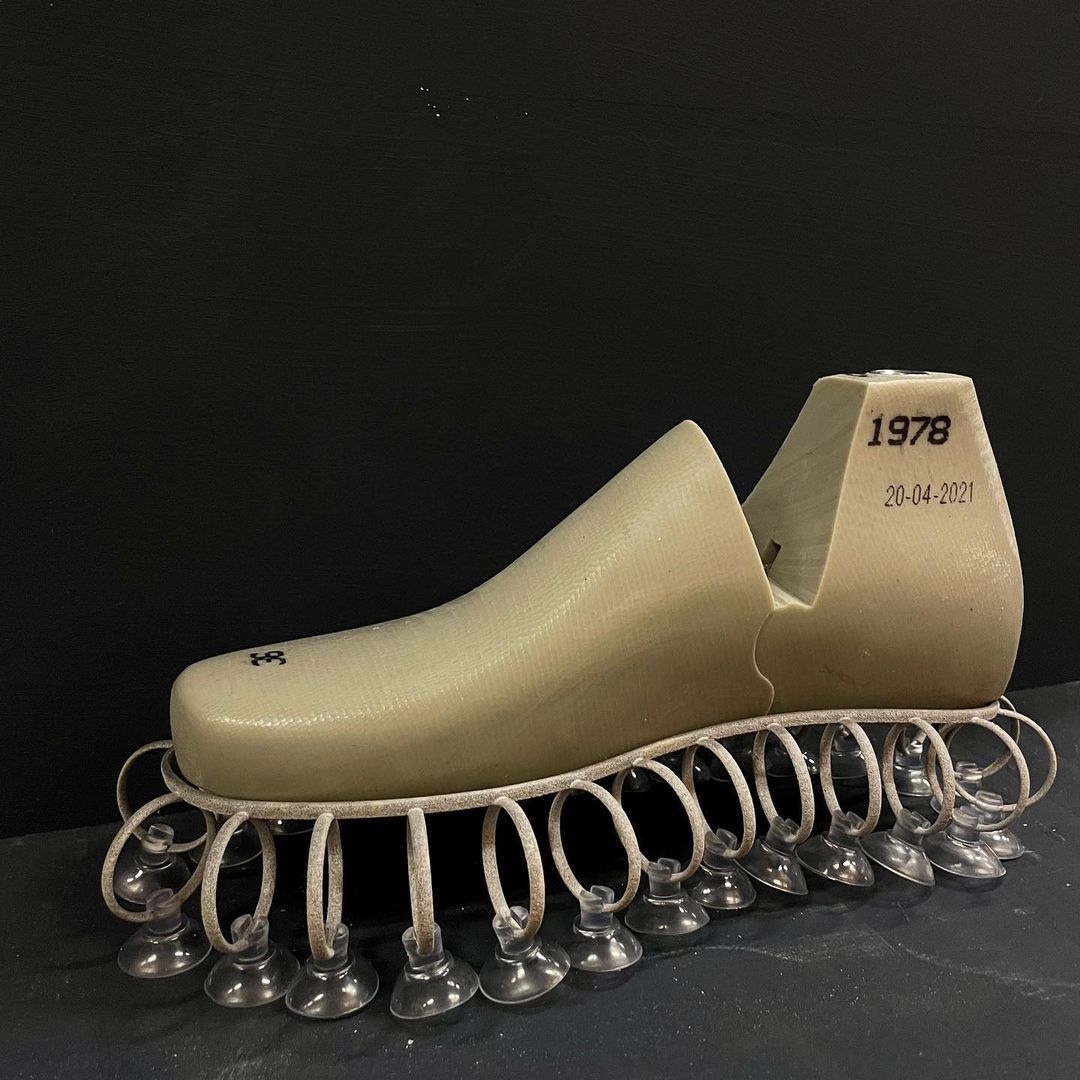
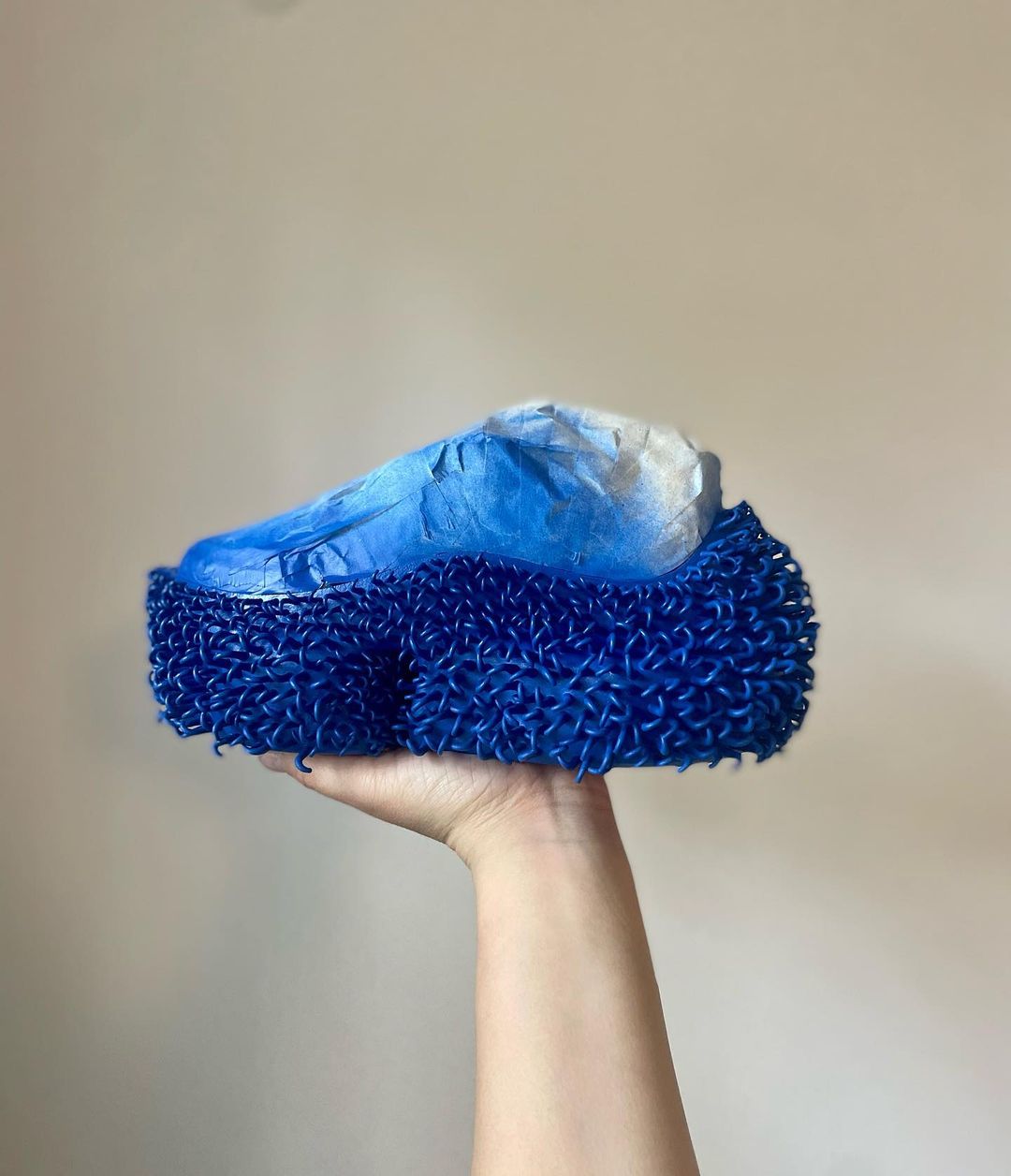
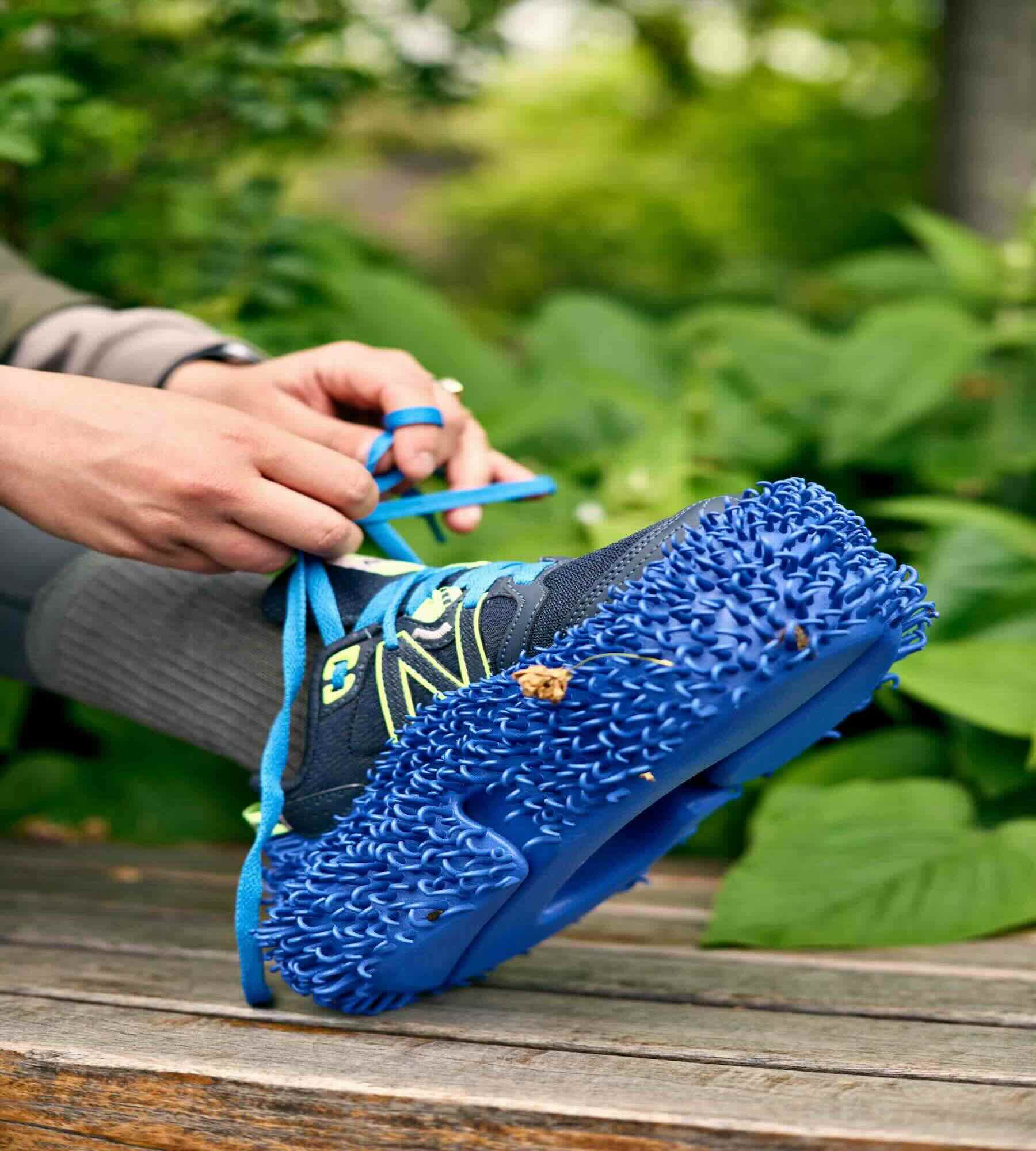
“By embedding eco-conscious design and manufacturing decisions into the product, we are able to create items that are both commercially successful and beneficial to the world. This approach not only makes the products appealing but also promotes environmental awareness and responsibility among consumers.”
How do you balance wearability with eco-consciousness in your designs? What approach do you take to create products that are both commercially successful and beneficial to the world?
Balancing wearability with eco-consciousness in my designs involves finding the equilibrium between sustainability and appeal. A significant part of this process is creating a conversation around the sustainability of the product, whether through the use of bio-materials or by highlighting environmental issues. At the same time, it’s essential to design products that resonate with a specific market or community without alienating them. By embedding eco-conscious design and manufacturing decisions into the product, we are able to create items that are both commercially successful and beneficial to the world. This approach not only makes the products appealing but also promotes environmental awareness and responsibility among consumers.
How did the initial concept for the Rewind the Run trainers come about? Can you tell us about the process you went through when developing the design.
The initial concept for the ‘Rewild the Run’ trainers emerged from my fascination with how keystone species contribute to rewilding, specifically through a process known as epizoochory. Epizoochory refers to the dispersal of seeds that become attached to animal fur or feet. I was inspired by this natural mechanism and wanted to replicate it in a wearable form.
To develop the design, I began by studying the textures and patterns that facilitate seed attachment in nature. As mentioned earlier, Velcro, a form of biomimicry, played a significant role in this process. The invention of Velcro was inspired by how cockle-burrs stuck to George de Mestral’s trousers and his dog’s fur, thanks to their tiny hooks. Drawing from this, I designed textures that mimic the seed attachment capabilities of plants like the cockle-bur and the grapple plant.
The specific texture on the ‘Rewild the Run’ trainers combines elements from these plants to create an effective epizoochory-inspired pattern. The chunky, platform-like outsole was inspired by the hoof of a bison, a keystone species known for its rewilding impact. However, I aimed to blend these natural inspirations with a digitally-led, futuristic aesthetic to create a unique and functional design.
Are there any further developments that you made to the trainers or are currently researching?
Yes definitely! This project started as a thesis project for my masters, so naturally the outcome has been quite ‘conceptual’ so to speak. I am researching and developing how to integrate the concept of Rewild the Run in a more commercially viable and wearable manner, whilst still taking into consideration the ecological and material limitations when working on a sustainability project. So basically, more to come!
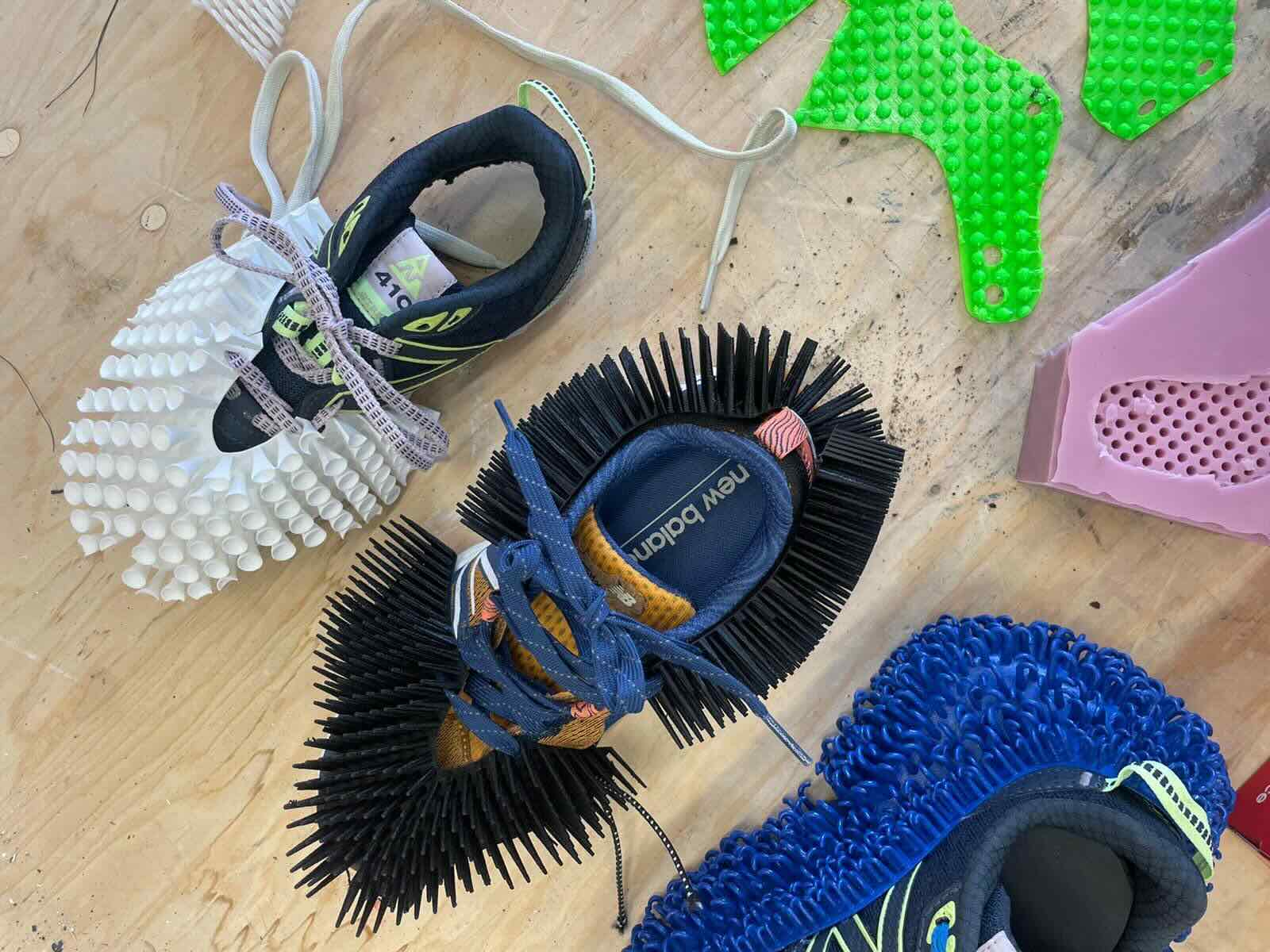
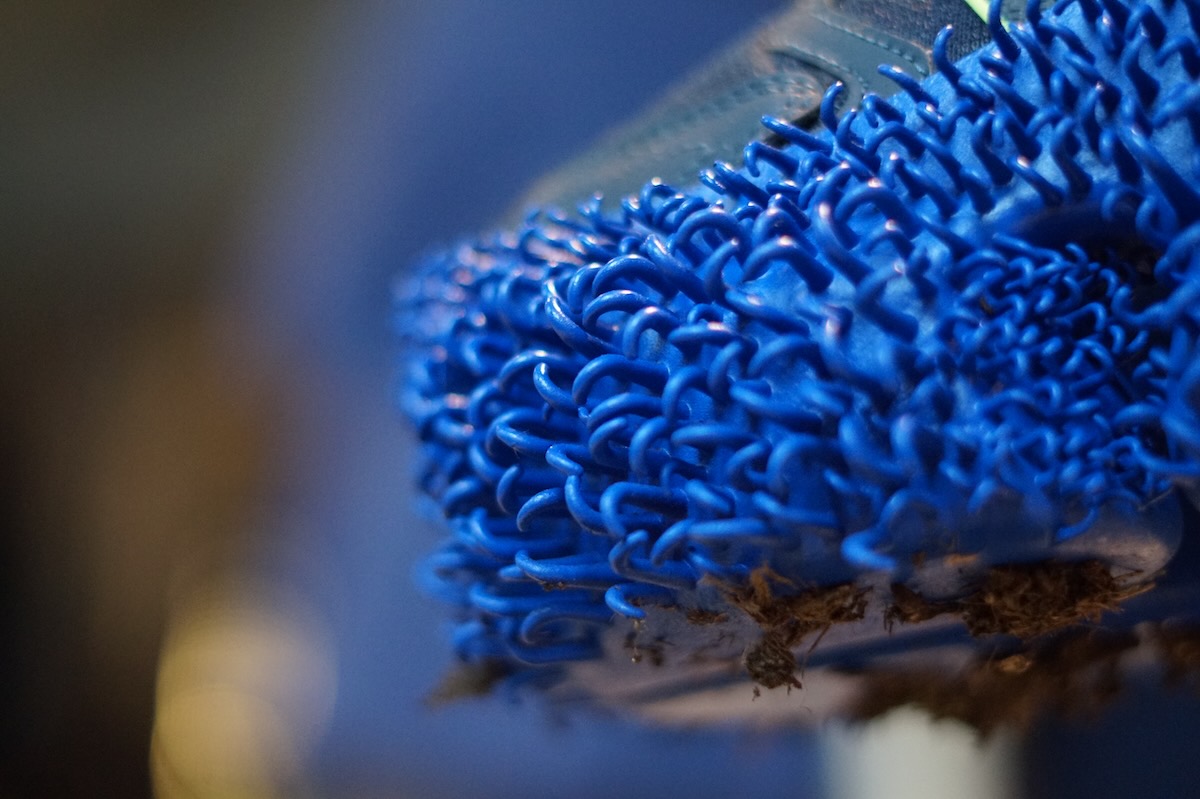
“Our awareness of natural systems is particularly fragile in cities, so engaging individuals through fashion and sport provides a unique opportunity for personal involvement. By allowing everyone to contribute, we can foster a deeper relationship with the wild in our cities and enhance our collective impact on the environment.”
Let’s talk about urban rewilding. Most people think of this concept as being relegated to architectural design and as the responsibility of policy makers, city planners and so on. Your Rewind the Run trainers subvert this belief by showing how everyone can contribute to urban rewinding efforts. How would you define Urban rewinding?
Urban rewilding, by definition, aims to restore natural processes and reintroduce nature on a city-wide scale. While it’s encouraging that policy makers and city planners are focusing on this, I wanted to democratize urban rewilding with these trainers. This project brings the concept to a smaller, more local level, emphasizing our often-limited connection with nature in urban settings.
Our awareness of natural systems is particularly fragile in cities, so engaging individuals through fashion and sport provides a unique opportunity for personal involvement. By allowing everyone to contribute, we can foster a deeper relationship with the wild in our cities and enhance our collective impact on the environment.
You were living in London when you designed and launched your ‘Rewind The Run’ trainers, do you think it’s a city that aligns with your design philosophy in urban rewilding? Are there aspects of the city that particularly support or challenge your approach?
Yes and no. London has recently seen many amazing and even radical urban rewilding efforts, such as the introduction of beavers in Greenford, West London. These initiatives are wonderful to witness and definitely align with my design philosophy. The city’s numerous parks and green spaces have made it particularly suitable for ‘Rewild the Run’, as the trainers can facilitate seed dispersal while running through different green areas.
However, like any urban environment, London has experienced significant damage to its local ecology. This presents a challenge but also an opportunity. It’s become crucial for us to advocate for greener urban environments, no matter which city we are in, so, by encouraging individual involvement in rewilding efforts, I believe we can collectively contribute to restoring and enhancing our urban ecosystems – whether that’s London or anywhere else.
What role does educating consumers on urban rewilding and ecological crises play in the planning and design of your work?
A very important role. I recognize that there isn’t necessarily a need for new trainers in the world, but the idea of using a product, like running trainers, as a means of active participation in a broader rewilding effort is an important message I want to convey.
By integrating this concept into ‘Rewild the Run’, I hope to inspire consumers to think differently about their purchasing decisions as it is vital that people consider the wider ecology and environment when buying clothes, shoes, or any other products. My goal is to encourage a mindset shift, where consumers are more aware of their impact and more motivated to support sustainable and ecologically responsible choices.
Studies have shown that jackets and socks can unwittingly display the mechanisms of epizoochory. Do you have plans to expand the design principles used in your Rewind The Run trainers to other apparel?
Indeed, it gives me a lot of joy when I find little seeds clinging to my socks or jacket during a walk! For now, my focus remains on shoes and refining the concept of rewilding through footwear. I’m collaborating with experts and designers to perfect this approach and make it as effective as possible. However, the principles used in ‘Rewild the Run’ trainers certainly have the potential to be applied to other apparel in the future. So, who knows? Watch this space!






